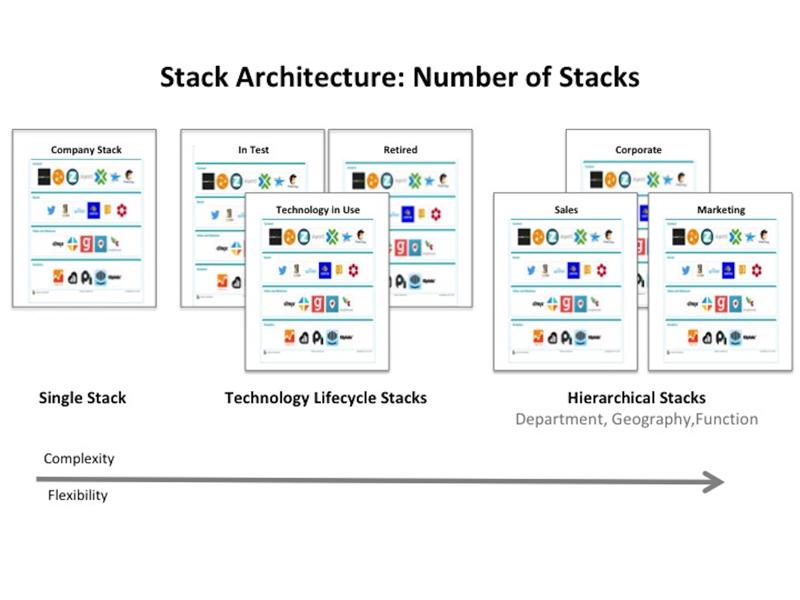There are three components to defining your stack structure:
It’s important to note that there is no right or wrong way to do the above; all that is required is that you create a format, architecture, and the right stack detail so that you can align and track the work you are doing to achieve the objectives you have identified.
There are a number of ways to physically track and manage your marketing technology stack. Most companies begin with a spreadsheet, which is a good starting place and may be all that you need if you are using 50 products or fewer. If you have already begun the process of creating spreadsheets to support GDPR preparation in order to keep track of the Data Privacy Agreements in place with each of your data processor partners, you can expand this to cover additional products and attributes. Once the number of products in the stack starts to grow, however, and the number of attributes tracked for each product increases, spreadsheets start to become unwieldy. Some companies have gone so far as to build their own internal micro-sites to support technology tracking.
We, of course, believe that CabinetM is the ideal platform for tracking and managing your marketing technology stack.
Now that you know how you are going to track the components of your stack(s), what are you actually going to track?
Are you just going to track products in use, or are you also going to track products being evaluated and tested, or rejected and retired?
Are you going to create a single stack to track everything or a stack for each team, department, or geographical region?
There are many ways to construct your stack architecture and hierarchy. If you are not sure how to begin, we recommend starting with three stacks as you work through your initial stack audit:
Note: we often see companies introduce a “Products in Evaluation” stack to capture products that are being considered for testing, as well as a “Rejected Products” stack, aka “Trash Stack,” to capture those products that didn’t make it through evaluation and testing successfully.
The most common approaches to defining stack layers are by:

